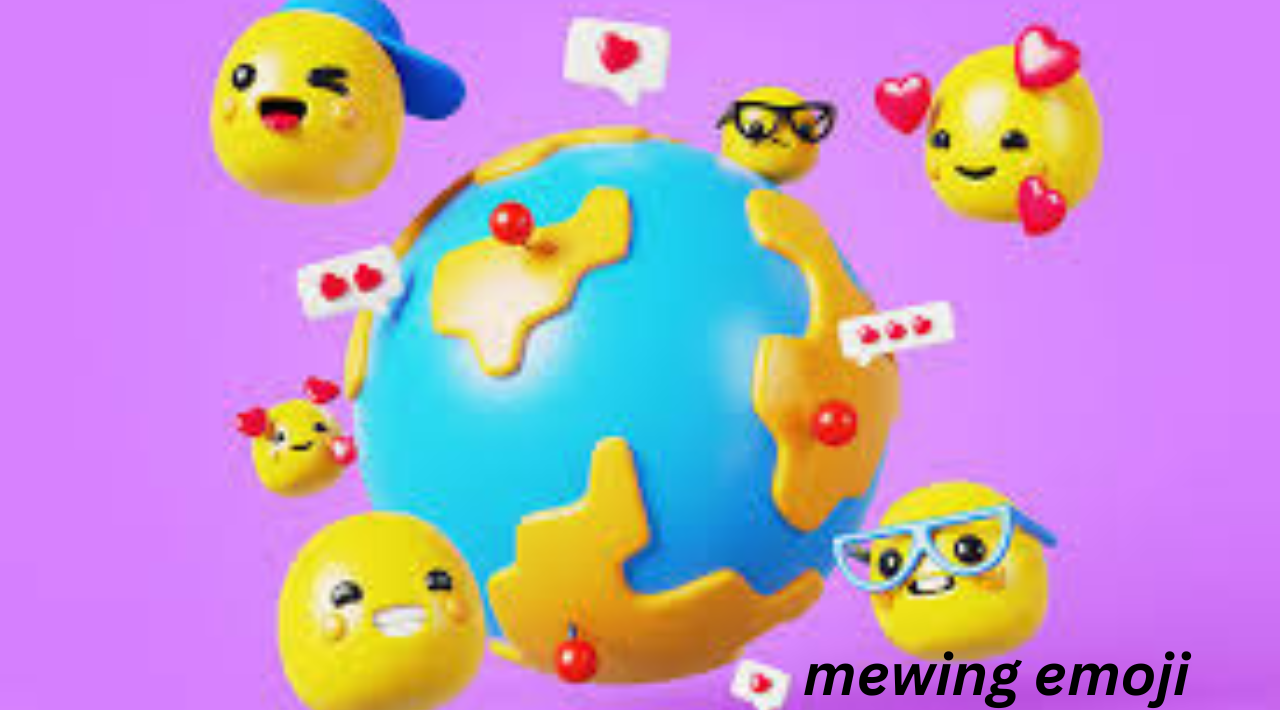Mewing Emoji The Internet s Facial Flex and What It Really Means
The internet is a fascinating playground where serious self-improvement tactics often collide with meme culture—and few trends embody this better than the “mewing emoji.” What began as a niche orthodontic technique to improve jawline aesthetics has transformed into a widely recognized cultural reference, now symbolized by emojis like (cat with wry smile) or (raised eyebrow). These seemingly harmless icons have come to signify more than just a mood—they represent confidence, facial flexing, and sometimes an ironic take on the self-optimization movement.
As platforms like TikTok, Reddit, and Instagram continue to amplify trends, the lines between self-care, vanity, and comedy blur. The mewing emoji is the latest viral manifestation of this blend. It’s no longer just about practicing proper tongue posture for jawline enhancement—it’s about being seen doing it, or at least joking that you are. Whether you’re flexing your side profile in a selfie or leaving a cheeky comment under a transformation reel, the emoji now acts as a badge of aesthetic awareness.
So, what exactly is “mewing,” and why does an emoji represent it? Let’s dive into the meaning behind the trend, the psychology driving it, and how it reflects our evolving digital identities.
What is Mewing?

The Origins of Mewing
Mewing is a technique popularized by British orthodontist Dr. John Mew and his son Dr. Mike Mew, based on a field called orthotropics. The method encourages maintaining proper tongue posture—pressing the entire tongue against the roof of the mouth while keeping the mouth closed and breathing through the nose. According to proponents, consistent mewing can improve jawline definition, facial symmetry, and even breathing mechanics over time.
Although these claims are largely anecdotal and debated in scientific circles, the appeal lies in its simplicity. Mewing doesn’t require surgery, supplements, or even a gym membership—just mindfulness and discipline. This makes it particularly popular among younger demographics looking for accessible self-improvement strategies, especially in a world where social appearance is increasingly digital and visual.
Going Viral Online
The idea of reshaping your face through nothing more than posture quickly captivated online audiences. On YouTube, transformation videos and testimonials racked up millions of views. TikTok took it a step further, making mewing a cornerstone of “glow-up” culture, often paired with time-lapse progress clips, tutorials, and satire.
The simplicity of the concept, mixed with the promise of noticeable aesthetic improvements, made it irresistible content. In short, mewing became not just a practice but a symbol of transformation—and soon after, emojis started to embody that symbolism in visual shorthand.
What is the Mewing Emoji?
The Emergence of the Emoji Trend
As with many viral movements, the mewing trend eventually gave rise to its own internet dialect—and the emoji became a cheeky way to say, “I’m mewing right now” without saying a word. The cat face with a smug expression mimics the confident, slightly exaggerated facial tension that comes from flexing the jawline. It’s often accompanied by side-profile selfies or “sigma face” memes—stoic, confident, hyper-masculine expressions popular in meme subcultures.
Other emojis like (raised eyebrow), (brain), or (skull) are also used depending on context—whether it’s to indicate deep concentration while mewing or a reaction to someone else’s attempt at it. The internet has essentially built an inside joke around these visuals, turning a once-clinical technique into a performative and cultural symbol.
How It Became a Meme
The memeification of mewing and its emojis can be traced back to the ironic tone adopted by online communities. Reddit threads, gym bro accounts, and Gen Z influencers on TikTok began using the emoji not just to signal physical self-improvement but also to mock it lightly. It’s part serious, part satire—just like many popular online trends.
A typical meme might show a side profile with the caption, “When you remember to mew during your school presentation .” This playful framing makes the trend more accessible and digestible for a wider audience, helping it spread like wildfire across platforms.
Cultural Impact and Meme Evolution
Mewing Emoji in Meme Culture
The emoji’s role in meme culture is a fascinating one. On one hand, it’s used to signal genuine dedication to self-improvement and fitness culture. On the other, it’s a punchline for how absurd or obsessive those efforts can sometimes become. This duality is what keeps the emoji relevant and widely used—it allows for both identification and parody.
Popular meme formats often involve exaggerated “before and after” comparisons, using the 😼 emoji as the climax of a successful transformation. In some posts, it even appears as a way to flex mental toughness or self-discipline—like mewing during a breakup or while studying. It’s become symbolic of someone who’s “dialed in,” regardless of the situation.
Digital Identity and Aesthetic Pressure
As with any trend rooted in physical appearance, there’s a darker side to consider. The glorification of jawlines and facial symmetry can reinforce unrealistic beauty standards, especially when presented without nuance. Young people may internalize these ideals, feeling pressured to constantly improve or compare themselves to filtered, curated images online.
However, meme culture provides a buffer. Because the emoji is used both earnestly and ironically, it opens the door to self-awareness and humor. This blend allows users to participate in the trend while also maintaining a healthy emotional distance from the pressure of perfection.
How to Use the Mewing Emoji (And Should You?)
When and Where It’s Used
The mewing emoji thrives in comment sections, captions, and reaction posts. It’s used to acknowledge a glow-up, poke fun at someone flexing their jawline, or subtly announce that you, too, are “holding that tongue posture.” Whether it’s a TikTok montage or an Instagram selfie, the emoji adds context without words—it tells your followers, “I’m in on the joke, but I’m also serious.”
You’ll also find it in motivational posts, fitness reels, and even Discord conversations where users encourage one another to stay consistent with their self-improvement goals. In these settings, the emoji becomes a shorthand for accountability and shared progress.
Balancing Fun with Reality
Like any trend, moderation and intention are key. The mewing emoji can be a lighthearted way to stay committed to a harmless practice. But when overused or taken too seriously, it risks turning into another tool of comparison and vanity.
Use it if it makes you feel good or if you’re in on the joke. But don’t feel pressured to conform to every viral standard of beauty or self-improvement. The real “glow-up” is about confidence, self-awareness, and a bit of humor along the way.
Conclusion
The mewing emoji is more than just a digital wink—it’s a symbol of how internet culture transforms simple ideas into layered, evolving phenomena. What started as a niche orthodontic concept became a viral movement, and from there, a meme-laced cultural reference. The emoji encapsulates everything from jawline flexes and glow-up goals to online self-parody and community identity.
As digital language continues to evolve, so too will the ways we express self-improvement, humor, and identity. Whether you’re genuinely mewing or just along for the laughs, the mewing emoji shows how even the smallest icons can carry big meaning in the world of internet culture.
FAQs
What does the mewing emoji mean?
The emoji often signifies someone flexing their jawline, practicing mewing, or joking about doing so. It’s used both seriously and humorously.
Which emoji is considered the “mewing emoji”?
The most common one is (cat with a smug smile), but and are also used in different contexts related to mewing or focus.
Is the mewing emoji part of a joke?
Yes, it’s often used ironically or satirically in meme culture, though some people use it seriously to express progress.
Can mewing actually change your jawline?
There’s limited scientific evidence, but some people claim long-term improvements in jaw definition with consistent practice.
Is using the mewing emoji promoting unrealistic standards?
It can be, depending on context. While it’s mostly used for fun, it’s important to approach it with awareness of its impact on self-image.
You May Also Read: https://networkinfonews.com/importantcool-momfood/














Post Comment